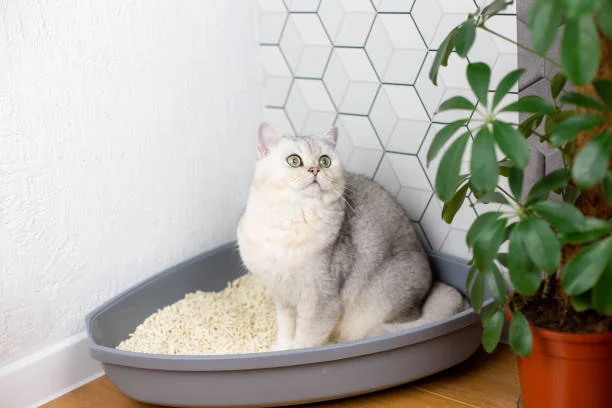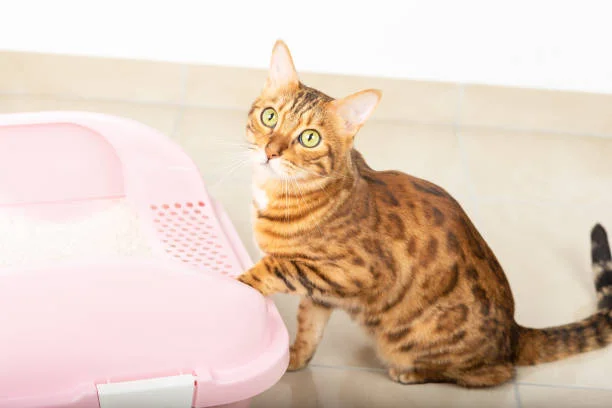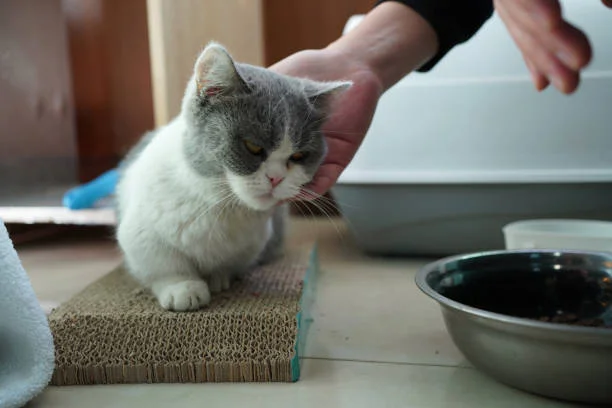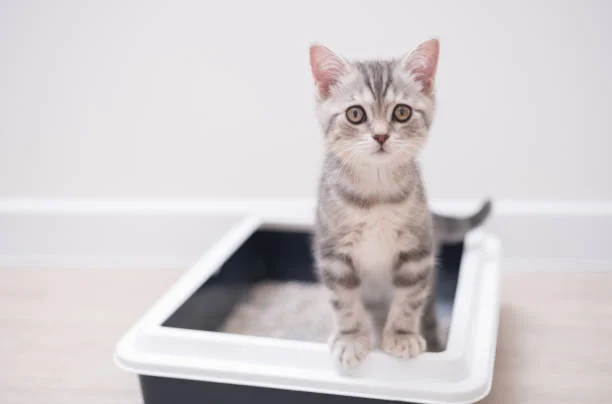Cats make wonderful companions, but it can be frustrating when they “refuse to use the litter tray” or you wonder “Why won’t my cat use the litter tray?” Training your cat to properly use the litter tray is essential for a clean and harmonious living environment.
In this article, we’ll explore how to train cats to use litter trays, making sure your feline friend has mastered the art of using the litter trays.
Why Won’t My Cat Use the Litter Tray?

Dirty Litter Tray
Cats are naturally clean creatures. If the litter tray is dirty with feces or urine, your cat will likely avoid it. They prefer a clean environment for their toileting needs. Regular scooping and changing of the litter is essential. A good rule of thumb is to scoop at least once a day and change the entire litter weekly or more frequently if you have multiple cats.
Unpleasant Location
The location of the litter tray plays a crucial role. It should be placed in a quiet, private, and accessible area. Avoid areas with high foot traffic, loud noises, or near their food and water bowls. For example, a corner in a laundry room or a quiet bathroom can be ideal. If the tray is in a busy hallway or next to a noisy appliance, the cat may feel uncomfortable and look for alternative places.
Unsuitable Litter Type
Cats have their own preferences when it comes to litter. Some cats don’t like certain textures. For example, some cats prefer litter that has a fine sandy texture, while others may not like coarse or clumping litter. Scented litter can also be a problem, as the strong smell may be off-putting to some cats. Try different types of litter to find the one your cat likes.
Inadequate Litter Tray Size or Design
If the litter tray is too small, your cat may not be able to move around comfortably or bury its waste properly. A general guideline is to have a litter tray that is at least 1.5 times the length of your cat from nose to base of tail. Also, some cats may prefer open trays, while others might feel more secure in a covered or hooded one. Consider your cat’s preferences and try different designs.
Stress and Environmental Changes
Cats are sensitive to changes in their environment. Moving to a new home, the introduction of a new pet, or even changes in the household routine can cause stress. This stress can lead to litter box avoidance. Provide your cat with a calm and stable environment. If there are new changes, give your cat time to adjust and consider using pheromone sprays or diffusers to help reduce anxiety.
Medical Issues
Sometimes, a cat’s refusal to use the litter tray can be due to medical problems. Urinary tract infections, bladder stones, or other health issues can cause pain or discomfort during urination or defecation. If you’ve ruled out all other possible causes and the problem persists, it’s best to consult a veterinarian for a proper diagnosis.
How to Train Cats to Use Litter Tray?
Step 1: Choosing the Right Litter Box

The type of “litter house” or “house cat litter box” you choose is important. Consider the size; it should be large enough for your cat to move around comfortably and bury its feces. If possible, a covered litter box can provide your cat with more privacy, making it more likely to use it. When you “move the house cat litter box”, make sure to place it in a suitable new location as soon as possible to avoid confusing your cat.
Step 2: Choosing the Right Litter

Cats have different preferences for litter. You may need to try different types of litter. Some cats prefer a fine textured litter, while others may prefer a scented litter. The right litter can go a long way in encouraging your cat to use the litter box.
Step 3: Location of the Litter Box

Place the litter box in a quiet, well-ventilated, and easily accessible area. Avoid noisy or high-traffic areas. This is crucial, as a chaotic environment may cause your cat to avoid the litter box.
Step 4: Encourage Your Cat

You can use a “spray to encourage cats to use the litter box”. There are special sprays on the market that can entice your cat to use the litter box. Additionally, positive reinforcement is key. Give your cat praise or small treats when he or she uses the litter box.
For very young cats, introduce them to the litter box gently at first. Place them in the litter box after eating or when they wake up, as these are common times they may need to be eliminated. Gently move their paws into the litter to show them how to dig. You can also take a small amount of dirty litter from where they have been eliminated before (if there is one) and place it in the new litter box to give them a familiar smell.
Repeat this process several times a day. Kittens usually learn quickly, but be patient. Do not scold them if they have an accident outside of the litter box, as this can cause fear. Instead, clean the area thoroughly with an enzyme cleaner to remove the smell so they are not drawn back to that spot.
Step 5: Dealing with refusal

If your cat “won’t use the litter box”, don’t panic. First, check that the litter box is clean. Cats are very particular about cleanliness. If it’s dirty, they won’t want to use it.
Keep a close eye on them during the initial training period to make sure they are using the litter box correctly. As they grow older and become more independent, they will usually continue to use the litter box as long as the environment remains consistent and comfortable.
How Long Does It Take to Train a Cat to Use a Litter Box?

The time it takes to train a cat to use a litter box varies. On average, it can take anywhere from a few days to a few weeks. Kittens generally learn faster, often within a few days, because they naturally know how to eliminate in the proper place. For adult cats, it depends on their past experiences and temperament.
If your cat is already accustomed to going somewhere else, retraining can take up to two weeks. Consistency is key. Placing the litter box in a quiet, convenient location, using the right type of litter, and providing positive reinforcement when your cat uses the litter box correctly can speed up the process. However, if there are underlying medical or stress-related issues, training may take longer until these are resolved.
Training in Special Situations
After the Move
Moving can be a stressful time for cats, especially when adjusting to the new litter box environment. When you arrive at your new home, set up the litter box in a quiet and private place as soon as possible. Try to mimic the old setup in terms of the type of litter box and the litter used. Place some of your cat’s old litter that has been used in the new litter box to provide a familiar smell. Encourage your cat to explore the new area around the litter box.
You can do this by gently guiding them or using treats to get them there. Keep a close eye on your cats during the first few days to make sure they find and use the litter box. If there are any surprises, clean them thoroughly with an enzyme cleaner to remove odors and prevent your cat from being attracted back to that location.
Multi-Cat Households

In a multi-cat household, it is important to make sure each cat has access to a clean, comfortable litter box. The general rule is to have one more litter box than the number of cats. For example, if you have three cats, you should have four litter boxes. Place the litter boxes in different locations around the house to provide privacy and avoid overcrowding.
Some cats may be more dominant and prevent other cats from using the litter box, so there are options to prevent this problem. Check the litter box regularly to keep it clean. If you notice that one cat consistently avoids a particular litter box, or there are signs of conflict, you may need to adjust the location or type of litter box. Also, make sure each cat has enough private space in the house to reduce stress, which can affect their litter box use.
Conclusion

Training a cat to use a litter box is a process that requires patience and care. First, you need to understand the nature of your cat and its sensitivity to the environment. If you are not sure which type of cat litter your kitten likes, the best solution is to buy several types of cat litter and offer them to your kitten. Click on our link to choose some cat litter for your kitten.
Place the litter box in a quiet, ventilated, and accessible place. Training steps include initial guidance, habit -building, and positive reinforcement. Properly handle cat refusal or unexpected situations. In special situations such as moving or in a multi-cat household, take appropriate measures to ensure that your cat can use the litter box normally.









